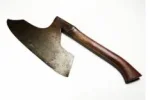The Trump White House talking about North Korea sounds eerily and increasingly like the George W. Bush administration in the run-up to the Iraq War.
Officials make similar arguments about the necessity of acting against a gathering storm; proudly claim understanding of the adversary’s motivations
; express frustration at countries that should be likewise alarmed at the problem not supporting American policy; and believe the sand is running out in the hourglass before military attacks are required.
They admit no alternative interpretation of the facts. They are blithely dismissing enormous damage their policy would incur for regional allies. They seem innocent of understanding the disastrous and isolating consequences for America’s role in the world to choose preventive war rather than the moral heights of restraint in the face of threats.
President Trump’s National Security Adviser, Lieutenant General H.R. McMaster, repeatedly indulges the same apocalyptic rhetoric: North Korea’s nuclear program is “
the most destabilizing development, I think, in the post-World War II period;”
the threat is “increasing every day;” the leadership is “undeterrable.” Others on the National Security Council staff compare North Korea to World War II Japan: a mobilized and militarized society, inherently and belligerently expansionist, constrainable solely by the exercise of superior military force.
The lines of argument employed by the Bush Administration in 2003 and the Trump Administration in 2017 both rely on the same basic elements:
- The adversary’s actions are increasingly threatening;
- It would be irresponsible to continue the policy trajectory of prior administrations;
- The adversary leadership cannot be considered rational;
- Their intent is not merely regime survival but attacks on the U.S. and allies;
- International cooperation is inadequate to the threat; and
- Retaliation after a first strike from the enemy is insufficient—either to deter or to punish.
And, as Mira Rapp-Hooper has emphasized, the Trump a
dministration argues that the U.S. must act before North Korea attains even more dangerous capabilities.
They are reprising the argument made by the Joint Chiefs of Staff during the Cuban missile crisis.





